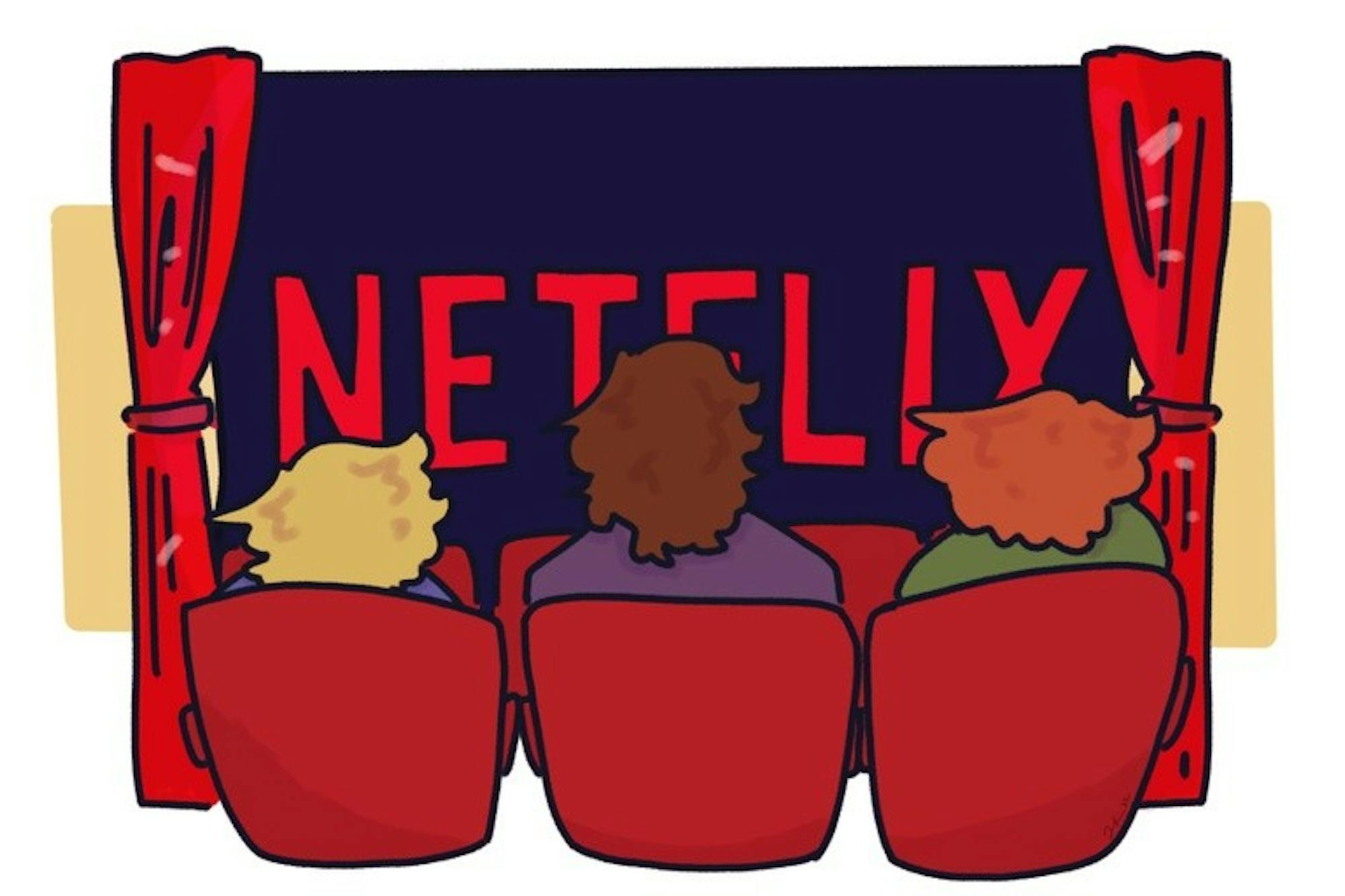Over the last decade, interest in going to movie theaters has been decreasing as a direct effect of the growing popularity of major streaming services, such as Netflix and Amazon Prime. This reduces the number of people who go to movie theaters to see the latest films and damages the industry irrevocably. It’s important to ask: Does this show how technology is killing the traditional industries of society — or rather, does it have beneficial, innovative impacts on accessibility?
Whilst streaming services have been available since 2005, beginning with the founding of YouTube, their popularity has increased more steeply in the past few years. In 2018, 28% of people strongly preferred to watch a movie for the first time in movie theaters, with only 15% preferring to stream it. However, by June 2020, the percentage of adults strongly preferring to go to the theater plummeted to 14%, with 36% preferring to stream movies.
Introduced in 1977, VHS was the first step in straying from the long-term pastime of going out to the theater. The idea of watching movies from one’s home was seen as revolutionary at the time. 20 years later, in 1997, DVDs made further progress in enticing viewers to stray from theaters — with greater accessibility at home of a better quality and wider range.
However, no other alternative has had as devastating an impact to the success of movie theaters as that of streaming services, enabled by their growing popularity and power. Between April to May 2022, an online survey with 2,210 respondents was carried out regarding the popularity of movie theaters. The results of this showed that 41% of respondents rarely go to see a movie at the theater.
The decreasing demand for movies to be shown at theaters is due to many preferring the more cost-effective, comfortable choice to watch movies at home. One of the key factors of this is price: The average price of a ticket to see one movie at the theater is $11 while the price for a basic monthly Netflix subscription is $9.99. Thus, some may see the growing preference for streaming services as a positive change — making movies more widely available and accessible for everyone.
More and more people are subscribing to streaming services, allowing them to become a dominating social power in recent years. In 2015, 52% of US consumers had subscriptions to one or more streaming services; this increased to 78% by late 2021, highlighting the incline in demand. The largest premium video on-demand service is Netflix, with approximately 220 million memberships globally. Netflix’s subscriber base is steadily increasing, accelerated by the onset of COVID-19 in 2020. These streaming services — including Netflix — are now movie-making powerhouses of their own. Netflix has produced over 1,500 originals. In other words, these newer streaming services are now challenging long-upheld studios, like Warner Bros.
One key event seemed to have catalyzed the transition toward streaming services: COVID-19. While devastating to society in areas such as the economy and health, COVID-19 also had a devastating impact on the success of social industries including theaters, partly due to their closure and also the apprehension surrounding returning to theaters after lockdown. In 2020, AMC lost $4.5 billion due to the pandemic while having to close all of their theaters, alongside Cinemark. While the theater market has recovered marginally, irreversible damage to the industry is evident; the U.S. and Canadian box office reached $4.5 billion, an increase of 105% from 2020, yet still lower than pre-pandemic levels.
Despite their popularity, the streaming service market has its own flaws. Netflix currently faces a “free-rider” problem; 41% of Netflix users are utilizing the streaming service without paying by sharing accounts. However, Netflix announced plans in March 2022 to try and combat this, as it decreases their potential revenue. Though, in some sense, the transition to streaming services may seem to make movies more accessible, these companies still want to make a profit.
A perhaps old-fashioned desire to attend the theater is undeniably still present, and movie theaters continue to contribute a significant amount to the economy. Thus far, in 2022, the top grossing film is Top Gun: Maverick” which had a gross of $714,982,877 since its release in May 2022. Harry Styles, an actor in the 2022 film “Don’t Worry Darling,” made a comment at the Venice International Film Festival Press Conference regarding its portrayal in theaters, commenting that his favorite thing about the movie is that "It feels like a real, like, you know, go-to-the-theater-film movie." Styles capture a resonant idea— the experience of a movie theater is undoubtedly different from that of being sat at home; the surround sound system, the physically larger screens and the option of viewing in 3-D are all unavailable in home viewing.
Movies are being consumed in an entirely different way than ever before. The traditional pastime of taking the family to see a movie at the theater has swiftly transformed to sitting at home, with the choice of any movie at the consumer’s fingertips. Technology has irrevocably changed this industry, damaging the profit of the movie theater market itself yet also removing financial barriers and innovating the film industry as a whole.




